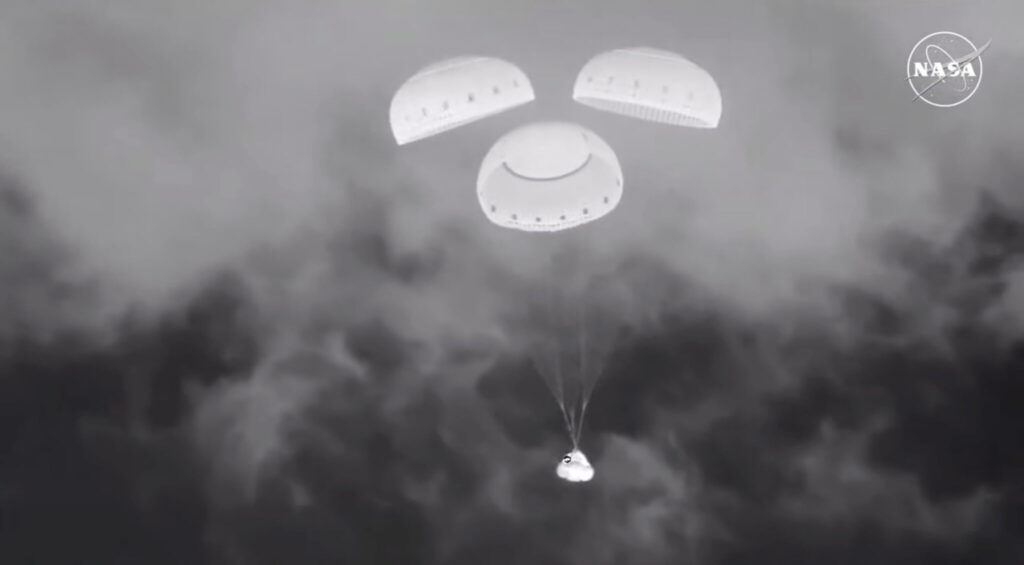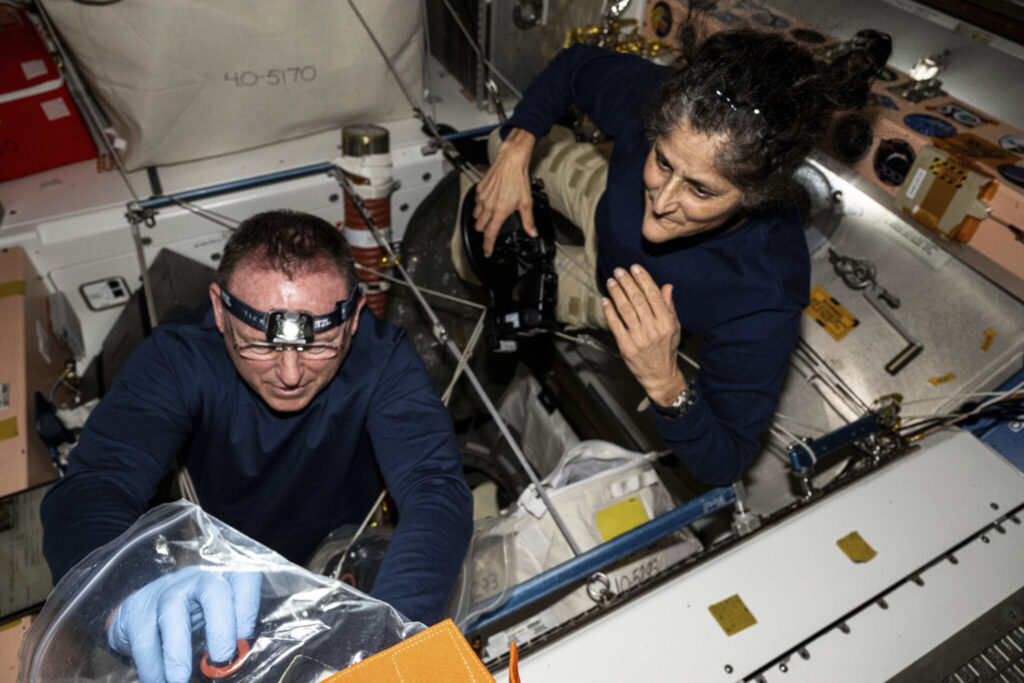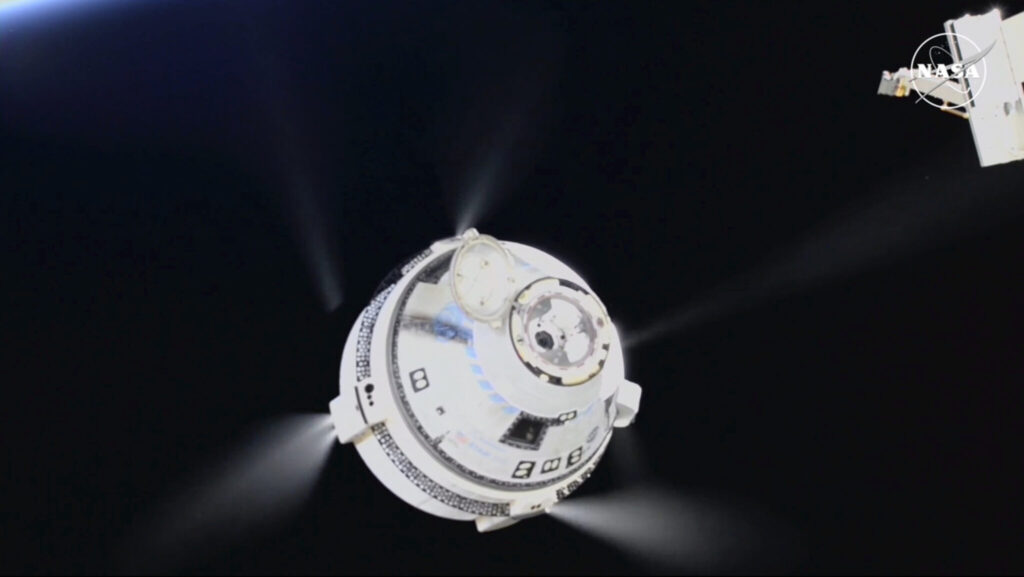Boeing’s troubled Starliner capsule returned to Earth without two astronauts, Butch Wilmore and Suni Williams, who remain aboard the International Space Station after NASA deemed their return in the capsule too risky due to multiple thruster and helium leak issues. They will now await a ride home aboard a SpaceX flight early next year.
Quick Read
- Boeing’s first astronaut mission ended with the Starliner capsule returning to Earth empty, leaving astronauts Butch Wilmore and Suni Williams in space due to safety concerns.
- The capsule landed at New Mexico’s White Sands Missile Range, six hours after departing the International Space Station (ISS), marking the conclusion of a mission plagued by technical issues.
- NASA deemed it too risky to return the astronauts on Starliner, following thruster failures and helium leaks, despite Boeing’s assurances after extensive testing.
- Wilmore and Williams will remain aboard the ISS until February 2025, when a SpaceX capsule will bring them back, more than eight months after their initial June 2024 launch.
- The mission was originally intended to return the astronauts after one week, but multiple technical problems, including thruster malfunctions, delayed their return.
- NASA officials praised the Starliner’s safe landing, calling it a “bull’s-eye landing,” but stood by the decision to leave the astronauts in space for safety reasons.
- Boeing issued a statement supporting NASA’s decision, while NASA emphasized the importance of continued collaboration between Boeing and SpaceX for astronaut transport.
- This mission adds to Boeing’s ongoing struggles with Starliner, following previous test flight failures and delays, while SpaceX has successfully completed nine crewed missions for NASA.
- NASA remains committed to using both Boeing and SpaceX to transport astronauts, with plans for alternating launches until the ISS is decommissioned in 2030.
- Further analysis is needed to determine the future of Starliner flights, and NASA will assess the capsule once it returns to Kennedy Space Center for examination.
Boeing capsule returns empty as NASA astronauts left stranded in space
Newslooks- CAPE CANAVERAL, Fla.-
Boeing’s first astronaut mission ended on Friday night with its Starliner capsule returning to Earth empty, leaving two test pilots, Butch Wilmore and Suni Williams, behind in space. NASA made the decision to keep the astronauts aboard the International Space Station (ISS) until next year, citing safety concerns.
After six hours of travel, the Starliner landed safely at New Mexico’s White Sands Missile Range, descending through the darkness on autopilot. This marked the conclusion of a mission that had been plagued with technical issues, including thruster failures and helium leaks since its launch in June.
While Boeing believed the Starliner was safe to bring the astronauts home, NASA disagreed and opted for a different solution. The astronauts will now remain in space until February, when a SpaceX capsule is scheduled to bring them back. This decision comes after months of uncertainty about how and when Wilmore and Williams would return to Earth.

Originally, the astronauts were scheduled to return on the Starliner a week after their June 5 launch. However, the mission encountered multiple technical problems, including failures in five of the capsule’s thrusters and leaks in the propulsion system. Although Boeing conducted extensive testing and reassured NASA that the capsule was safe, the space agency decided the risks were too high.
On Friday, the capsule departed the ISS with empty seats and the astronauts’ blue spacesuits still on board. “She’s on her way home,” Williams said as the capsule undocked and disappeared into space. Despite some additional thruster issues during reentry, the capsule successfully landed, with NASA officials praising the “bull’s-eye landing.”
Steve Stich, NASA’s commercial crew program manager, expressed relief at the capsule’s safe return but stood by the decision to leave the astronauts in space. “I think we made the right decision not to have Butch and Suni on board,” Stich said during a news conference. While Boeing did not participate in the briefing, two top company officials issued a statement supporting NASA’s judgment.

The Starliner mission has been fraught with delays and setbacks. After NASA retired its space shuttles, it hired Boeing and SpaceX to transport astronauts to and from space. Boeing has faced several challenges, including a problematic 2019 test flight, a costly 2022 do-over, and the current difficulties with Starliner.
SpaceX, meanwhile, has completed nine successful crewed missions for NASA, with a tenth flight scheduled for later this month. Wilmore and Williams are now fully integrated into the ISS crew, participating in repairs and experiments alongside seven other astronauts.
As veteran astronauts, both Wilmore and Williams expected challenges with the test flight. However, the persistent technical issues with the Starliner’s propulsion system raised significant concerns. Although Boeing conducted numerous thruster tests in space and on the ground, NASA ultimately opted for a safer alternative, arranging a SpaceX return mission instead.
Engineers will now examine the Starliner once it is transported back to NASA’s Kennedy Space Center in Florida. NASA remains committed to having both Boeing and SpaceX provide astronaut transport services, with the goal of alternating launches until the ISS is decommissioned in 2030. However, it is unclear when Boeing’s next crewed mission will take place.
NASA officials emphasized that further analysis is needed to determine the future of Starliner flights. “It will take a little time to determine the path forward,” Stich said.







